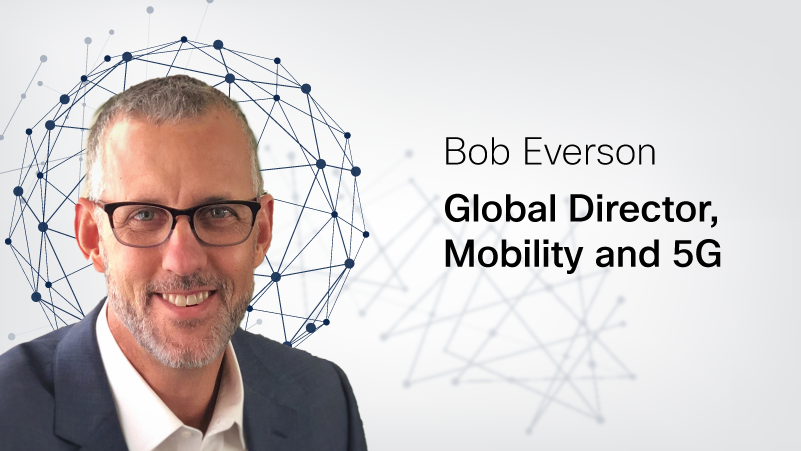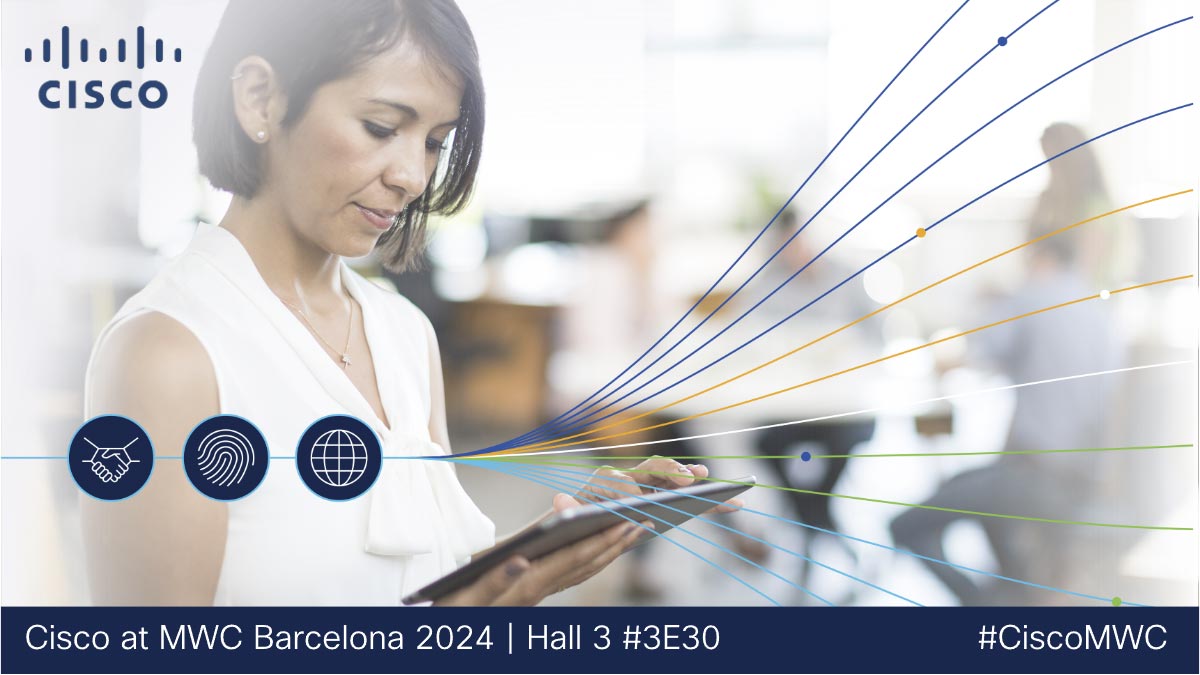Cisco and Rakuten Symphony announced at Mobile World Congress in Barcelona that the two powerhouses will partner to develop and deliver solutions for mobile networks based on OpenRAN. The joint solutions and go-to-market model will help address needs like cost reduction, enhanced agility, and an accelerated time-to-market.
Bob Everson, Senior Director of 5G Architecture for Cisco, believes that this partnership will usher in new momentum for OpenRAN technology, spurring adoption in the 5G era. To learn more about why Everson thinks the next couple of years will be huge for OpenRAN, we asked him a few questions.
Q. Hi Bob! Can you explain how OpenRAN works, and what’s the current status of OpenRAN adoption?
A. RAN stands for Radio Access Network, which is essentially the portions of a mobile network that generate the radio signals that reach your cell phone and other devices. By OpenRAN, we mean fully opening up the RAN—currently, radio access networks have been built with a closed architecture. This means proprietary interfaces and systems, so the RAN is largely controlled by a single vendor.
By opening this up, you accomplish several things that are really important. First, you give operators more optionality around who they can put into their network so you can increase supply chain diversity. But perhaps even more important is that this optionality gets them flexibility in how they want to build out their network in the future. It also allows for greater programmability and agility in the infrastructure because again, those interfaces are open.
Technology is moving fast, and that includes end-user applications and requirements, so it's virtually impossible to predict exactly what you're going need in five years, let alone when the next generation comes up. So, if we deploy an open infrastructure now, they will have much more flexibility when they need to add new services and capabilities later on.
Open RAN adoption is picking up, with several deployments and countless more operators in the trial stages. It’s no longer a question of if, but when, and the next two years are going to be pivotal.
Q. What benefits are customers seeing with disaggregation? What key lessons have we learned?
A. Disaggregation applies in many ways and can bring significant benefits to the network. It frequently goes hand-in-hand with virtualization and now cloud native technologies and generally involves separating the hardware from the software layer. Cisco has been involved in, and leading disaggregation, for decades across diverse aspects of the network – from data centers to IP networking, the mobile core, and numerous other applications.
Some of the greatest benefits include more flexibility, agility, and programmability.
When we apply disaggregation to the radio access network, we are talking about the separation of hardware and software, as well as the disaggregation of the radio functions. A typical RAN deployment centers around large radio base stations which are essentially appliances with integrated hardware and software, interconnected with other elements over proprietary interfaces.
RAN disaggregation allows operators more architectural and deployment flexibility to better match the needs of their business. That flexibility also provides agility, improving time to deployment, time to market with new services, new service creation capabilities, and greater programmability.
Q. What does Cisco bring to the Rakuten Symphony partnership?
A. We’re taking the leading technology from Cisco and from Rakuten Symphony and bringing it together into solutions that are validated, tested, and ready to deploy.
The primary areas where Cisco technology comes in starts, with the network foundation and includes our automation and mobility portfolio.
I want to talk about the network for a minute as it seems to be almost an afterthought in the OpenRAN discussion, but it is the platform that all of this runs across.As we discussed earlier – disaggregating the RAN means breaking apart a proprietary box, separating the hardware and software, and splitting those functions across the network. That means the distributed network is essentially handling what used to run across the backplane in a device. Cisco has industry leading transport and data center solutions which have been designed and tuned specifically for Open RAN and it’s coexistence with legacy RAN.
In addition to the products, Cisco brings decades of experience with networking, disaggregation, programmability, and all of the various underlying technologies. We also have very valued relationships with global operators, and the expertise, services, and other capabilities to help with design, implementation and operations.
Q. What does Cisco’s partnership with Rakuten Symphony mean for Cisco’s approach to the Open RAN market? Does this signal a change in strategy for Cisco?
A. Actually, this partnership is in line with our strategy that we've had all along, which is to accelerate the viability and adoption of open RAN solutions and ensure their extension into a broader network architecture.
We partnered with Rakuten about four years ago and built the world’s first OpenRAN network together. The significance of this now is that we're partnering together to build common solutions that can be deployed for our customers.
Q. Finally, where does Open RAN go from here?
A. As I mentioned earlier, OpenRAN is no longer a question of if, but when. It’s generally accepted that this is better for operators, better for customers, and better for the industry. Over the next few years we’ll see this take off – moving from greenfield operators to more of the so-called brownfield operators who want to upgrade or evolve their existing networks. This is where we get to much greater scale and market share for Open RAN in the 5G era.
Then, as operators look to move to the next generation of technology, the hope is that that OpenRAN is the de facto standard. If we do everything right over the next few years, then we’ll see radio access networks flourishing in an open environment.
###



